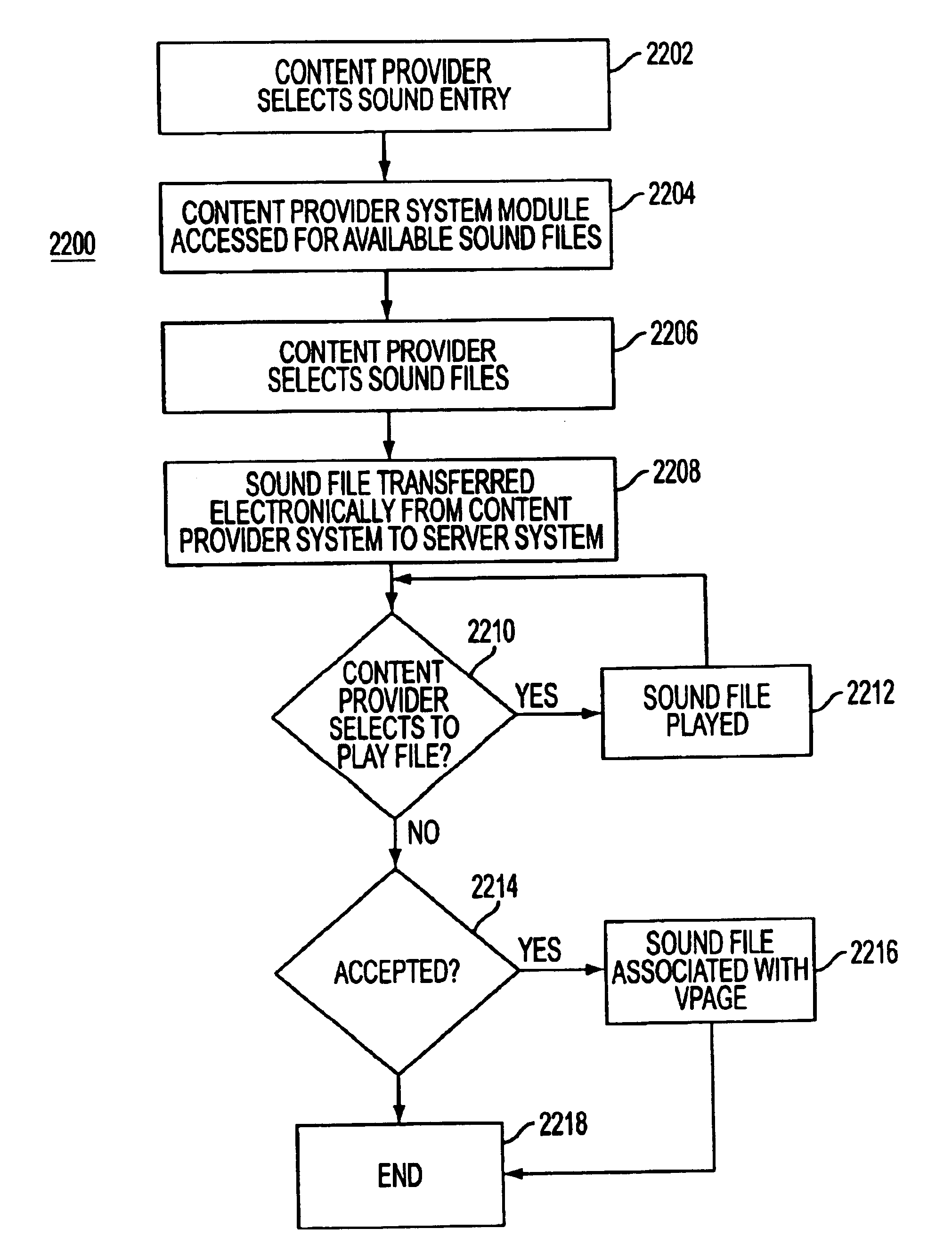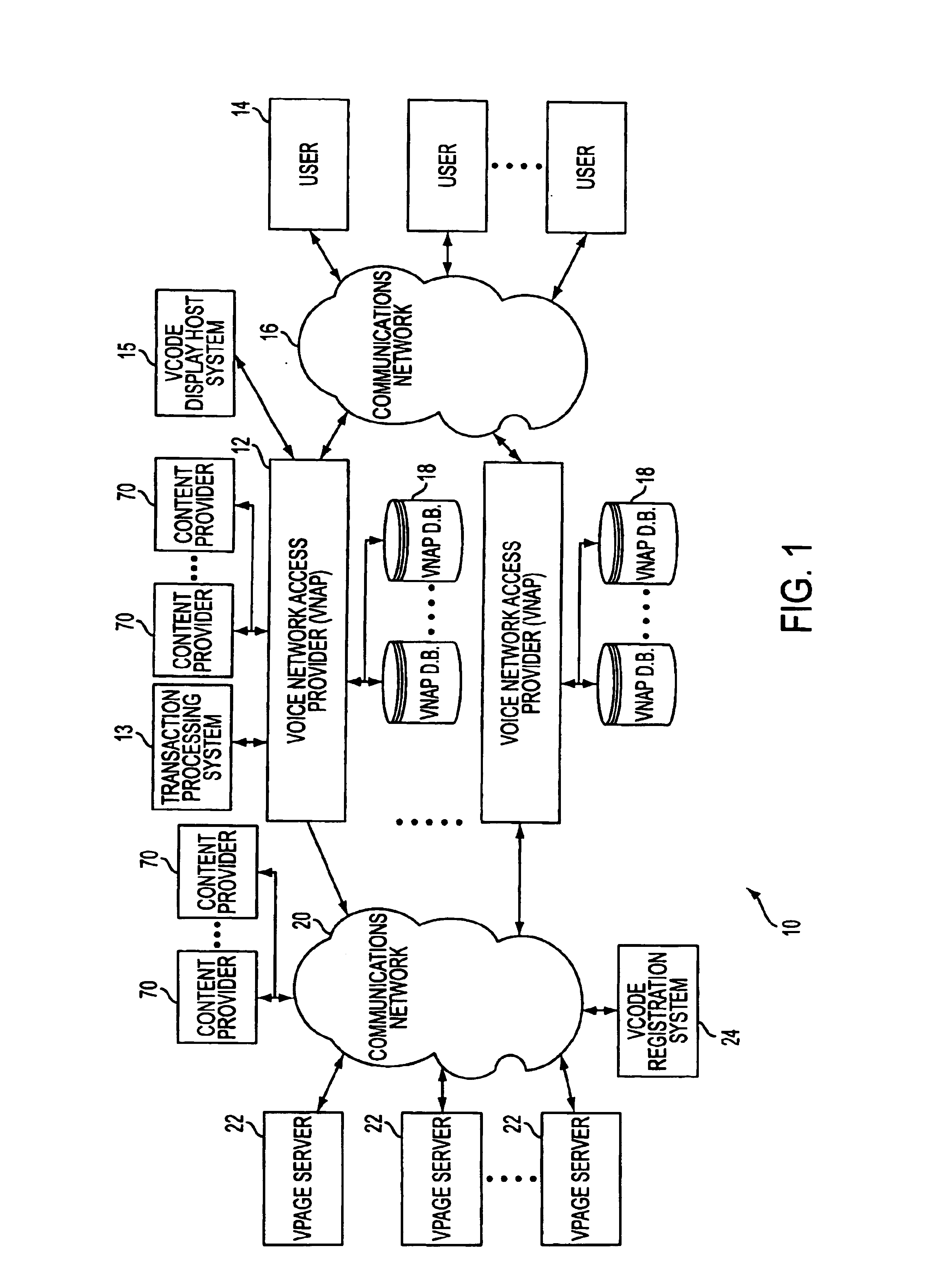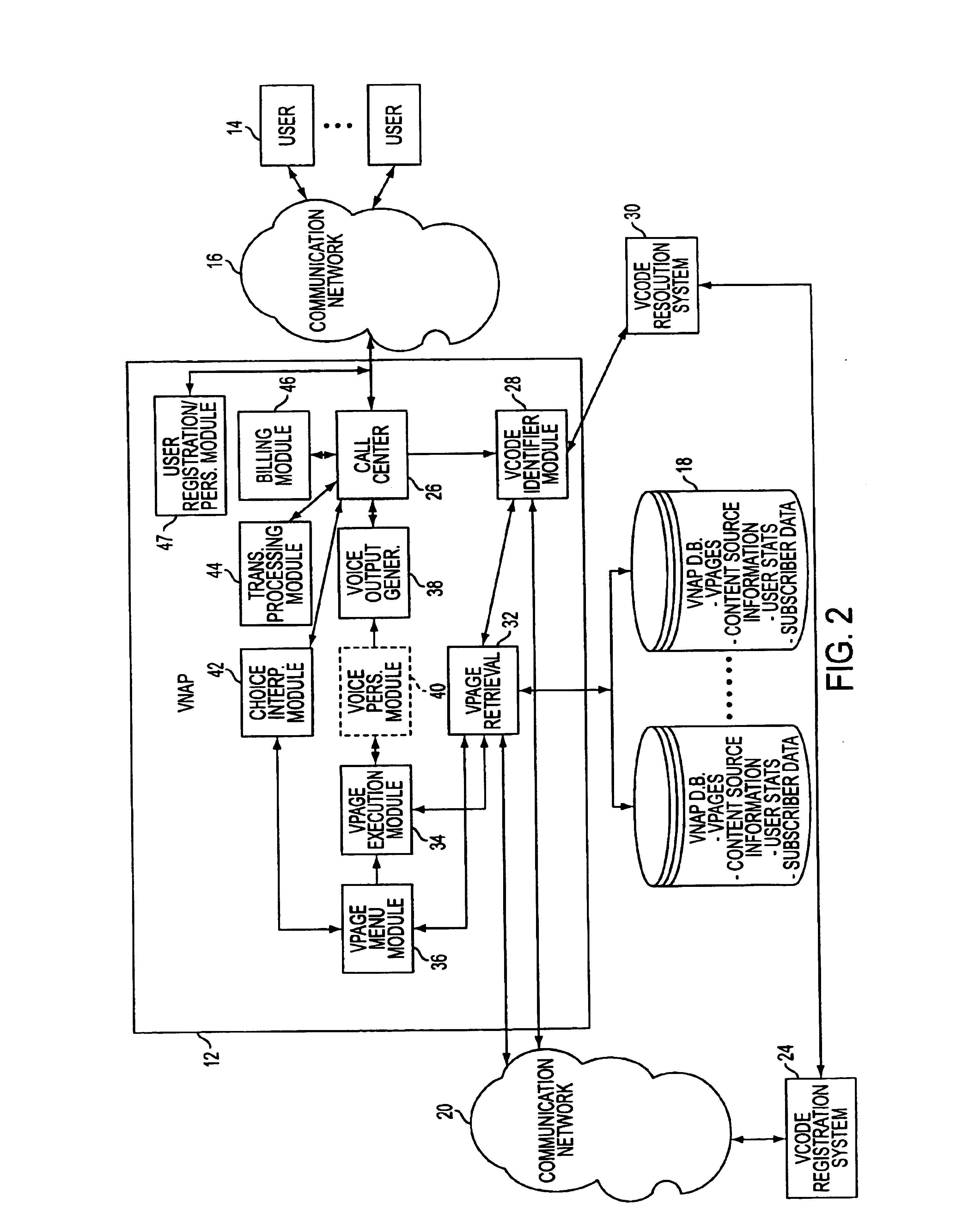[0013]The improvements described herein include an improved
content creation tool for enabling simpler creation of VPages, a voice pad functionality for storing and organizing voice recordings, call transfer from a VPage to a voice
recording system, a
financial transaction processing system for use in completing telephone-based transactions through VPages, a system for enabling content providers to
record audio in place of text-to-speech for VPages in the system, use of speech links through grammar modification to enable voice-based option selection, provision of a
directory of VPages to enable subscribers to access VPages, a
file transfer module that enables automatic delivery of electronic files, and a
sound file upload module that enables content providers to upload sound files for inclusion in VPages.
[0016]In one embodiment, participants in the system may be permitted to create voice content to be presented in VPages through a VPage creation module that provides a
user interface through which VPages may be created. That module may be accessible over
the Internet (
World Wide Web) or over a
telephone network. The voice content that a user may create may comprise structured VPages including audio, dialogs, menus, and links and may be stored in a variety of formats as well. The voice content may be stored as a
XML-based voice file (e.g. TML or Voice
XML), that references sound and text files. In this embodiment, participation is made easier by enabling users to call a VPage creation module via a telephone or log into a VPage creation module via
the Internet and through a series of menus, create a VPage.
[0024]The
content creation tool may enable content providers to specify various targets in response to the options selected to link the subscriber from that VPage. The targets available may include another VPage, call transfer to a specified
telephone number,
file transfer to enable the subscriber to receive a file electronically, or directly into a phone-mail or voice-mail box specified. These targets provide greater functionality and flexibility in the system.
[0026]Further, a
payment processing module may be provided that enables subscribers to interact with
transaction processing systems provided in VPages without having to provide
payment identifiers such as
credit card information, check information and the like. Instead, a
payment processing system may provide separate non-payment identification information that the subscriber provides to pay for a transaction. The network then obtains
verification from the payment processing system and executes the transaction.
Payment is then made between the payment processing system and the network and / or the content provider with which the transaction occurred.
[0056]In one embodiment, the user may be able to register with the VNAP and provide certain information, for example, name, address, billing information, phone number, etc. Other information such as personal preferences,
demographics and pyschographic data may be provided during the registration process or subsequently accumulated by the VNAP. This registration and other information may be used in a variety of ways. For example, the user's phone number (or phone numbers) may be used in connection with a caller ID or similar service to identify the user each time the user calls in. This may enable the VNAP to accumulate a transaction history for the user. The transaction histories for each user may be stored by the VNAP in a
data warehouse or other convenient storage system. This registration information also facilitates the ability to conduct transactions (for example, the purchase of goods) via the VNAP. If the VNAP identifies a user based on a caller ID (or other mechanism), and the VNAP has a profile for the user including address and
credit card information (among other things), transactions may be conducted without requiring a user to enter all of this information for each transaction. If desired, security codes or passwords may be used to provide extra protection for the user and VNAP. Also, voice print
authentication may be used to ensure the identity of a caller, particularly for high cost usages of the system.
[0058]In one example, the other information may correspond to information available via the
World Wide Web. The index may be created by the VNAP by using standard indexing techniques or bots that search the web for content related to the content of stored VPages. Real-time searches may be done by a VNAP during a user's call to provide current information related to the VCode entered by the user based on keywords associated with the VCode. This aspect of the invention has several advantages. One
advantage is that for many topics relating to content of a VPage, it would be costly and require a lot of storage to convert each “hit” from a web search to a
sound file. By using the technique described herein, only if a user desires access to other information beyond the stored
sound file is it necessary to convert the other information to a sound file, which may be stored for subsequent use or not. Other databases may also be searched for related information or other content.
 Login to View More
Login to View More  Login to View More
Login to View More 


